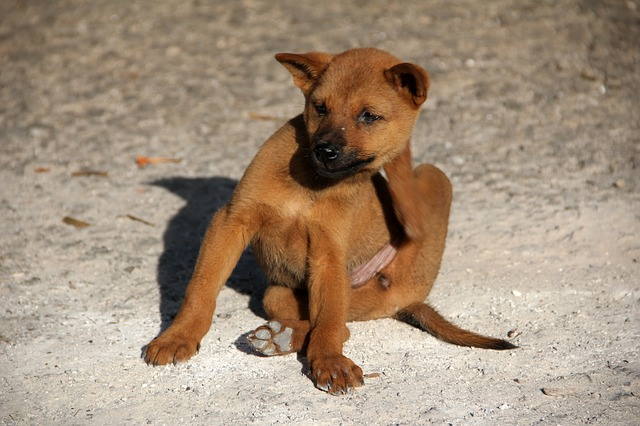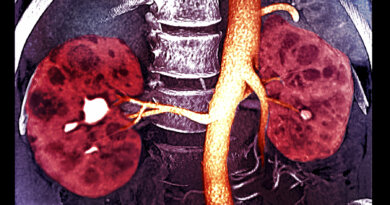Benadryl for Dogs: A Definitive Guide
›
›
Benadryl for Dogs by Sam Shaw |Published 02-20-2020
Although many of us may have wanted to medicate our dogs with Benadryl at some stage to treat for allergies, this may be extremely dangerous.
As an over-the-counter antihistamine, there are often no side-effects, yet with the incorrect dosage your dog could become overexcited, over-salivate, and be prone to rapid breathing. Benadryl for dogs can be lethal if the wrong dose is administered.
Benadryl for dogs, also known as Diphenhydramine, is an antihistamine that is used for allergies in humans and dogs. Benadryl is used for numerous conditions and helps with bug bite reactions, anxiety, stress, and even motion sickness.
That said, before using Benadryl on your dog, it’s best to consult with your veterinarian since this drug interacts with numerous other drugs, and also should not be used if your dog has certain health conditions.
What Are Antihistamines?
According to the Merck Vet Manual, antihistamines are H1-receptor antagonists that provide symptomatic relief from allergies and may also be used as sedatives (first-generation).
First-generation antihistamines may cause adverse effects because of their cholinergic activity and ability to cross the blood-brain barrier. Diphenhydramine is a first-generation ethanolamine-derivative antihistamine widely used in human and veterinary medicine.
It is the primary active ingredient in several brand-name OTC cold and sleep aid products such as Benadryl, Nytol, and Tylenol PM.
Benadryl for Dogs Helps Stress
Stress during travel and separation anxiety are frequent problems that pet parents face. Storm phobia, a new dog in the home, and the list goes on… Additionally, pet parents can also create a stressful environment for their pets by being nervous, angry, or fearful.
According to one study published in Applied Animal Behavior Science in 2016, some dogs had premature graying on their muzzle between 1 to 4 years of age due to being anxious. Noise anxiety, storm phobia, (thunderstorms), and separation anxiety all affect our dogs daily. As a pet parent to a fearful dog, it may be best to consider working with a positive dog trainer or a behaviorist to figure out the best ways of helping your dog overcome his anxiety.
Symptoms of Stress in Dogs
Dogs show stress in the following ways:
- Excessive barking
- Trembling and shaking
- Panting excessively
- Excessive licking of body
- Following pet parent around the home
- Dogs may also show aggression and may become destructive
- Dogs may even injure themselves by being stressed out
- Urinating or defecating in inappropriate places
- Howling to express loneliness, fear, and anxiety
- Trying to escape from home because they’re anxious
- Hiding during a thunderstorm or fireworks
Socialization is Important
Socialization needs to take place during puppyhood, and should continue throughout your dog’s life. This helps to ensure that your dog is comfortable around new people and animals, does not become stressed with new noises, and is relaxed in new environments or while being handled by different people. If your dogs are anxious all the time, consult with your veterinarian.
How Does Benadryl for Dogs Work?
As an antihistamine, Benadryl for dogs effectively alleviates anxiousness by targeting the H1 histamine receptor in the brain. Benadryl is useful in that it relaxes an anxious dog, and possibly may make him or her lethargic.
Additionally, Benadryl has an added benefit of having anticholinergic properties. This just means that Benadryl will prevent nausea and car/plane sickness. It also acts as a muscle relaxant allowing for anxious dogs to feel more comfortable and to relax wherever they are.
Benadryl for Dogs with Allergies
 Benadryl for Dogs may help with environmental and food allergies.
Benadryl for Dogs may help with environmental and food allergies.Our furry best friends can also be allergic to many things inside and outside the home. This can also include what the dog eats as well as what he comes in contact within his environment.
Allergens are substances that when inhaled, or absorbed through a dog’s skin, respiratory tract, or gastrointestinal tract, cause inflammation. Today, studies demonstrate that less than 10% of dogs are known to be genetically predisposed to be sensitive to allergens in our homes.
The triggering of airborne allergies in dogs usually starts at around 6 months and 3 years. If this happens, you’ll need to consult with your veterinarian so that he or she can do a proper physical exam and prescribe the correct medication.
Hives & Swelling
Hives (urticaria) and parts of the body that swell up as a result of an allergic reaction to either drug, insect bites, food or even chemicals, usually develop within 20 minutes of exposure to the allergen.
Hives do not cause a severe anaphylactic reaction. Your veterinarian will treat these allergic reactions by prescribing the right antihistamine.
Symptoms of Allergies in Dogs
 Benedryl for Dogs may make an itchy dog more comfortable.
Benedryl for Dogs may make an itchy dog more comfortable.Symptoms of dog allergies can look different in different dogs. Contact allergies and even allergies to food may show up as
- Itchy face, feet or ears
- Skin irritation on the stomach area and inside the front legs
- Some dogs are just miserably with itchy skin all over their body
- Constant scratching leads to skin infections and hair loss
- Allergenic dogs may also lick and chew at their paws or other parts of their body,
Benadryl for Dogs with Food Allergies
Dog food formula allergies are less common in dogs, though they can occur and show up with similar symptoms such as itchiness and ear infections. As soon as you notice your dog scratching excessively, you’ll need to consult with your veterinarian. Allergies do not go away, and your dog could hurt himself with all the scratching.
Age is not a factor in developing a food allergy. The best way to check for food allergies is by first switching dog food formulas to a novel protein source. So for example, if the dog has always eaten beef, a lamb formula.
Another option if individual grains are suspected change out the grain and see what happens. Corn, wheat, and soy are sometimes suspected of allergies, but it is always a very individual thing and trial and error may be the only way to identify the offending food.
When changing dog food diets, it’s best to maintain a high-quality, balanced and nutritionally complete diet that is formulated for your dog’s life stage.
Dog Food Allergy Symptoms
- Excessive itching & licking of fur
- Chronic ear inflammation with pain
- Gastrointestinal problems with diarrhea and gas
- Chronic gas without diarrhea
- Licking paws excessively
- Itchy hindquarters
- Inflammation with pain
- Uncomfortable with behavioral changes
Benadryl for Dogs with Mast Cell Tumors
Benadryl is sometimes used in dogs with mast cell tumors. These dogs have inflammation and will experience chronic inflammatory systems, caused by circulating histamine.
Benadryl works as a sleep aid in dogs. It causes drowsiness in dogs and can also beneficial when used as a mild tranquilizer. Consult with your veterinarian as to how you should use Benadryl on your dog.
Benadryl Dosage
According to PetMD, “The standard dosage for oral Benadryl is 1 mg per pound of bodyweight, given 2-3 times a day.
Most over-the-counter diphenhydramine (the generic form of Benadryl) tablets are 25 mg, which is the size used for a 25-pound dog. Always double-check the dosage before giving an over- the -counter medication. Besides, many formulations are combined with other medicines such as Tylenol, so make sure Benadryl tablets contain only diphenhydramine.” Dogs should never take Tylenol.
While Benadryl was formulated for humans, when opting to administer to your dog, it’s best to do so under the supervision of your veterinarian.
If you do decide to use Benedryl, vets recommend that you start with 1/2 dosage just to see how your dog will respond. Remember that you can get bottles with different dosages, so assure you are using one that has a dosage of 25 mg.
According to the Canadian Veterinary Journal, 2014, poisoning of animals occurs often accidentally as a result of easy access to over the counter medications along with lack of supervision by a veterinarian.
If you start with a 25 mg tablet:
Very Small Dogs (4-10 pounds): 1/4 tablet
Small Dogs (10-20 pounds): 1/2 tablet
Do Not Give Benadryl in These Cases
There are some cases in which Benadryl needs to be avoided. These will include the following health conditions:
- Allergic Lung disease
- Angle Closure glaucoma
- Bladder Neck Obstruction
- Bladder Disorders
- Heart Disease
- Enlarged Prostate
- High Blood Pressure
- Hyperthyroidism
- Sensitivity to diphenhydramine
- Pregnancy
- Prostatic Hypertrophy
- Seizure Disorders
- Vomiting (the result of pylorus obstruction)
Drug Interactions: Do Not Give Benadryl if Your Dog Takes One or More of These
If your dog is on these medications, you’ll need to avoid Benadryl since there may be an interaction.
- Amitraz
- Central Nervous System Depressants
- Epinephrine
- Furazolidone
- Heparin Sodium or Calcium
- Selegiline
- Warfarin Sodium
How to Administer Benadryl?
Triple check that you’ve got the correct dosage with your veterinarian!
Always consult with your veterinarian before administering Benadryl. Benadryl has the potential to be deadly if applied in the wrong dosage.
Consult with your veterinarian as to the correct Benadryl dosage for your dog. This is based according to your dog’s weight, medical history, age, and current medications.
Give only the amount recommended by your vet. If you notice a reaction, stop and call your vet.
Once you know your dog can tolerate it, you can administer it directly from the dropper or small syringe, or add it to your dog’s food. If you do decide to add it to the food, assure that the dog eats the entire bowl of food to assure the correct dosage.
Benadryl Toxicity
The most common side effects that occur within 1 hour of incorrect dosing in dogs are the following:
- Tachypnea (rapid breathing)
- Tachycardia (rapid heart rate)
Veterinary Treatment for Benadryl Overdose in Dogs
If your dog is showing any signs of an overdose, contact your vet immediately as this is a life-threatening emergency.
Your veterinarian will administer guaifenesin and supportive fluid therapy. This will allow for a favorable prognosis for recovery. Do not leave Benadryl lying around the home, most notably around puppies or dogs that are playful and that are still chewing everything. I
f you’re not sure as to whether your dog has overdosed on Benadryl, visit the nearest veterinary emergency room so that you can be on the safe side.
CBD as a Supplement and Nutraceutical for Anxiety in Dogs
Dogs can feel anxious at any time. They will pace, pant, and be extra vigilant. That’s why pet parents need to take into consideration steps to ease anxiety the natural way via CBD supplementation.
Anxious dogs will show those classic tell-tale signs of anxiety.
- Muscle tension
- Possible Pacing
- Extra Vigilant
- Panting
Dogs may inadvertently make themselves ill because of an underlying behavioral problem.
Also, dogs that have chronic pain will suffer from insomnia, lack of appetite, and anxiety. CBD may be beneficial in helping to ease stress and promote sleep and appetite.
That said, pet parents must understand why their dogs are anxious and take the necessary steps to ease canine anxiety. With each dog responding differently to Benadryl, there are other options like cannabidiol for pets. Let’s take a look at why CBD as a natural supplement may be beneficial for numerous health conditions in dogs.
CBD Studies
We adore our dogs, and there’s nothing that makes us feel better than learning about recent CBD studies, and how beneficial CBD maybe for pets.
In a 2018 study on CBD, Dr. Joe Wakshlag from Cornell University’s College of Veterinary Medicine studied the use of CBD oil for dogs suffering from osteoarthritis pain.
He and his team used industrial hemp or placebo hemp and administered it every 12 hours for 4 weeks. In the study, Dr. Wakshlag worked with Elle Vet Sciences that had created soft chews that also contained chondroitin and glucosamine, two natural compounds often prescribed for dogs with arthritis. The results showed that 80% of the group using the chews had a significant improvement in mobility. The veterinarians in the study referred to the results as…
“a game-changer that will change the face of veterinary medicine,”
What to Look for in CBD Dog Treats?
Not all CBD dog treats are made equal, and to find the best product for your dog, you should assure that the product you pick has these 10 features.
1. The CBD hemp should be 100% food-grade
2. It should be made using the C02 extraction method
3. Should not contain solvents like butane
4. Insist on a full spectrum lab test by a third party for purity and potency
5. Inspect lab certificates of analysis before purchase
6. No pesticide or herbicide contamination
7. Made with non-GMO hemp that contains less than 0.3THC
8. Grain-free functional chews
9. Made in the U.S. or Canada
10. Made in a flavor your dog loves, such as pumpkin, turkey, sweet potato, blueberry, or peanut butter.
Dog Biscuits/Chews Dosage Recommendations
The CBD dosage will vary according to the brand you choose. Dogs will need a different dosage depending on their size and also a different one concerning human dosages.
CBD dog treats are effective in helping ease anxiety and pain in dogs. For a more potent and rapid effect, CBD tinctures for dogs work well. Here’s the take on cannabidiol tinctures:
CBD Tinctures for Dogs
Both CBD dog treats and tinctures have been best sellers in recent years. With tinctures offering full premium plant, hemp extract product lines for pets, these may be beneficial for cancer, to stimulate appetite, for chronic pain, osteoarthritis, allergies, inflammation, and more.
With cannabidiol (CBD) being one of the trendiest product lines in pet and human health today, understanding CBD’s potential benefits before choosing one or a few for your furry best friend means understanding cannabinoids and the differences between CBD products.
Cannabidiol dog treats have low levels of cannabinoids that are available for a more extended period. That said, CBD capsules can be easily sprinkled in dog food or water. You’ll need to watch out for CBD products that may yield higher concentrations of cannabidiol. Consider the different potencies in CBD pet tinctures before purchasing.
As usual, consult with your holistic veterinarian to explore the various CBD brands together, and also to see if you can perhaps combine traditional meds with CBD. If you’re looking for a natural and healthier lifestyle for your furry best friend, CBD may be the way to go!
Benadryl for Dogs Author Bio
Sam Shaw is a health and wellness guest contributor and entrepreneur from Los Angeles. He loves to write about all things sustainability, holistic health, and pet wellness. Learn more here.
Does This Article Deserve Your Thumbs Up?
We always appreciate your support and encouragement. Your thumbs up means so much to us.

Free Monthly Newsletter
Sign Up for Our Free Newsletter and get our Free Gift to You.
my E-book, The Top 10 Mistakes People Make When Choosing a Dog (and how to avoid them)
If you enjoyed this page, I’d love it if you’d let me know. Just click the button below. Thank you.
Sharing is Caring




